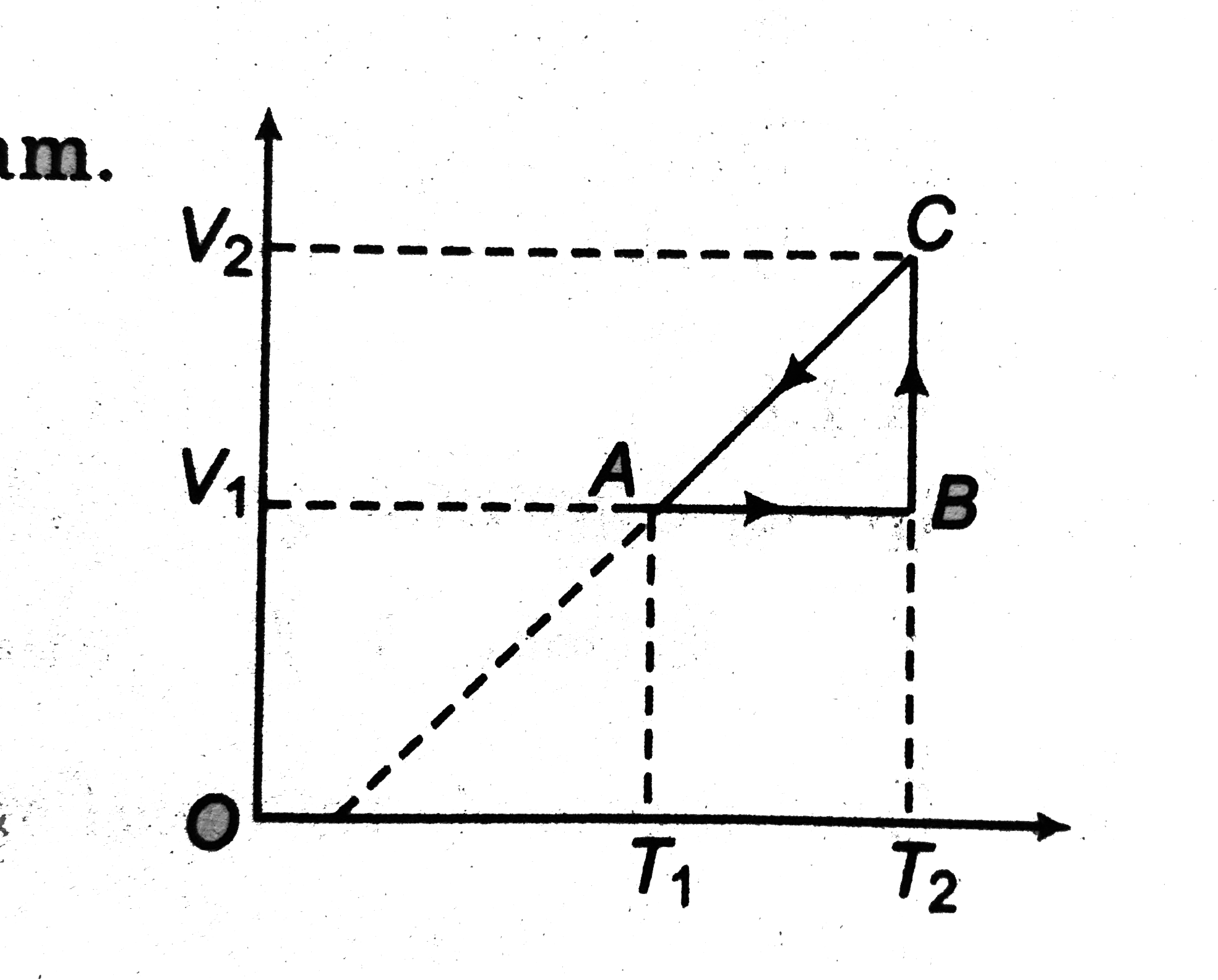Two moles of an ideal gas expand spontaneouly into vacuum. The work done is :-
Zero
2J
4J
8J
The correct Answer is:A
To solve the question regarding the work done when two moles of an ideal gas expand spontaneously into a vacuum, we can follow these steps:
1. Understanding the Scenario:
- We have two moles of an ideal gas that is expanding into a vacuum. This means there is no external pressure acting on the gas.
2. Identifying External Pressure:
- In a vacuum, the external pressure (P_external) is equal to zero. This is a crucial point because the work done by or on the gas depends on this pressure.
3. Work Done Formula:
- The work done (W) by the gas during expansion can be calculated using the formula:
W=−PexternalΔV
- Here, ΔV is the change in volume, which is the final volume minus the initial volume.
4. Substituting Values:
- Since Pexternal=0 (because it is a vacuum), we can substitute this value into the work done formula:
W=−0⋅ΔV
5. Calculating Work Done:
- This simplifies to:
W=0
- Therefore, the work done by the gas during its expansion into a vacuum is zero.
6. Conclusion:
- The correct answer is that the work done is zero.
Final Answer:
The work done when two moles of an ideal gas expand spontaneously into a vacuum is 0 Joules.
---
- We have two moles of an ideal gas that is expanding into a vacuum. This means there is no external pressure acting on the gas.
- In a vacuum, the external pressure (P_external) is equal to zero. This is a crucial point because the work done by or on the gas depends on this pressure.
- The work done (W) by the gas during expansion can be calculated using the formula:
W=−PexternalΔV
- Here, ΔV is the change in volume, which is the final volume minus the initial volume.
- Since Pexternal=0 (because it is a vacuum), we can substitute this value into the work done formula:
W=−0⋅ΔV
- This simplifies to:
W=0
- Therefore, the work done by the gas during its expansion into a vacuum is zero.
- The correct answer is that the work done is zero.
The work done when two moles of an ideal gas expand spontaneously into a vacuum is 0 Joules.
Topper's Solved these Questions
- THERMODYNAMICS & THERMOCHEMISTRYBOOK - VMC MODULES ENGLISHCHAPTER - THERMODYNAMICS & THERMOCHEMISTRYEXERCISE - Enable
49 Videos
- THERMODYNAMICS & THERMOCHEMISTRYBOOK - VMC MODULES ENGLISHCHAPTER - THERMODYNAMICS & THERMOCHEMISTRYEXERCISE - Efficient
48 Videos
- THERMODYNAMICSBOOK - VMC MODULES ENGLISHCHAPTER - THERMODYNAMICSEXERCISE - JEE ADVANCED (ARCHIVE)
44 Videos
Similar Questions
Knowledge Check
The cyclic process for 1 mole of an ideal gas is shown in the V-T diagram. The work done in AB, BC and CA respectively is
 A0,RT1Ln(V1V2),R(T1−T2)BR,(T1−T2)R,RT1In(V1V2)C0,RT2ln(V2V1),RT1V1(V1−V2)D0,RT2ln(V1)V2,R(T1−T2)
A0,RT1Ln(V1V2),R(T1−T2)BR,(T1−T2)R,RT1In(V1V2)C0,RT2ln(V2V1),RT1V1(V1−V2)D0,RT2ln(V1)V2,R(T1−T2)
1 moles of an ideal gas expanded spontaneously into vaccum. The work done will be
View SolutionFive moles of an ideal gas expanded spontaneously in to vacuum.
Then which is correct ?
View SolutionThe cyclic process for 1 mole of an ideal gas is shown in the V-T diagram. The work done in AB, BC and CA respectively is

View SolutionExpansion of a gas in vacuum is called free expansion. Calculte the work done and the change in internal energy when 1 L of ideal gas expands isothermally into vacuum until its total volume is 5L ?
View SolutionA gas expands isothermally and reversibly. The work done by the gas is
View Solution5 mole of an ideal gas of volume is expanded against vaccum to make its volume 2 times, then work done by the gas is:
View Solution6mole of an ideal gas expand isothermally and reversibly from a volume of 1 litre to a volume of 10 litre at 27° C .The maximum work is done
View Solution
